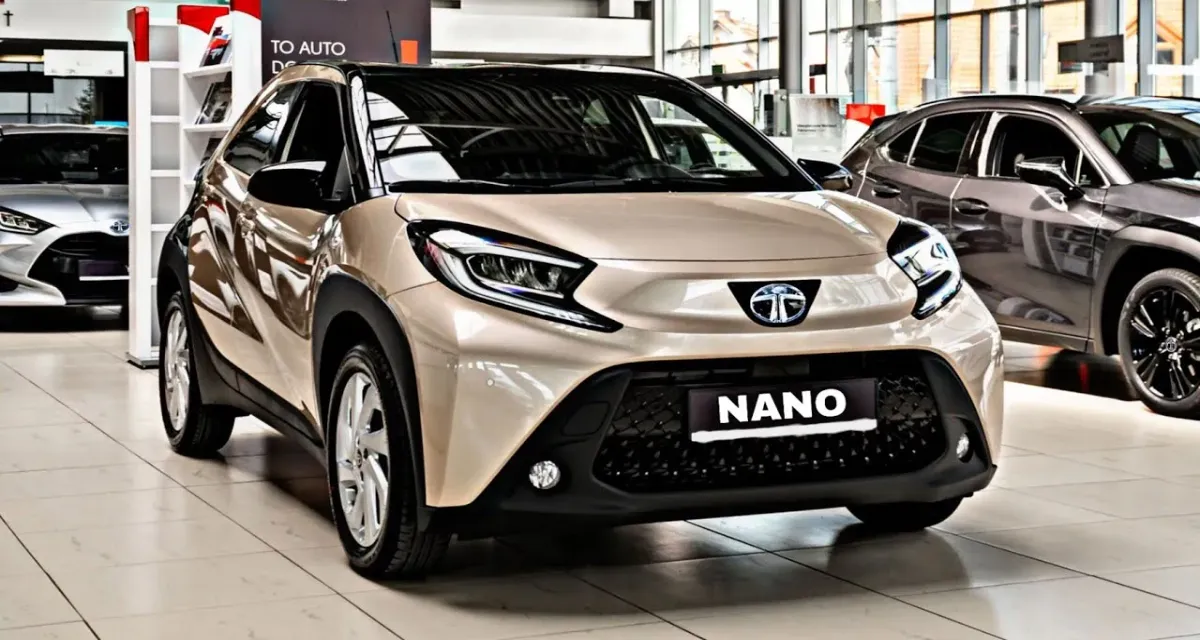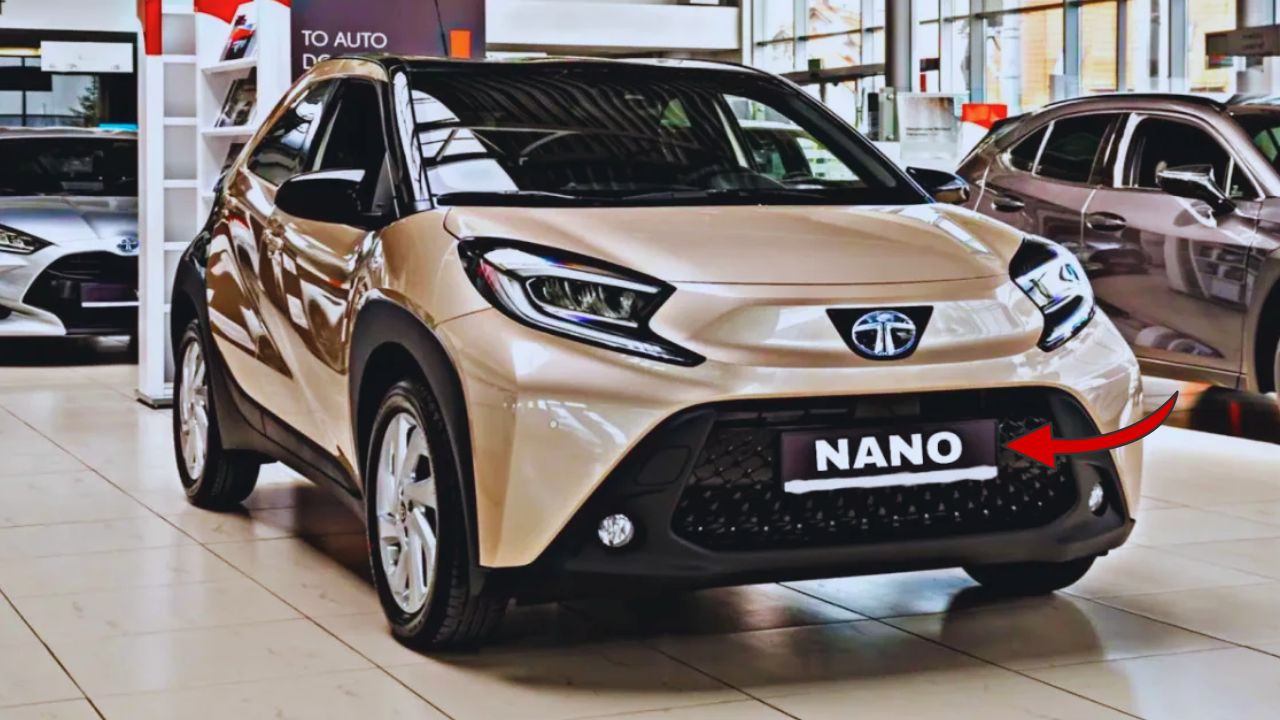The automotive world was stunned when Tata Motors unveiled the Nano in 2008, promising an affordable car for the masses at just ₹1 lakh (approximately $2,500 at the time). Nicknamed the “lakhtakia” or “one-lakh car,” the Nano represented Chairman Ratan Tata’s vision of providing safe, affordable transportation to millions of Indian families. After a troubled production run that ended in 2018, rumors now suggest the iconic small car might be making a surprising comeback to meet changing market conditions and consumer demands.

The Original Vision: A Car for Every Family
When Ratan Tata first conceived the idea for the Nano, he was reportedly inspired by seeing entire families precariously balanced on scooters during monsoon season. His vision was straightforward yet revolutionary: create a car that would be affordable enough for motorcycle owners to upgrade to four wheels, providing greater safety and comfort for Indian families.
The Nano’s development was an engineering marvel. Tata engineers stripped away everything non-essential while maintaining basic functionality and safety. The result was a compact 624cc rear-engine vehicle that weighed just 600 kg. When unveiled at the 2008 Auto Expo in Delhi, it created a global sensation for its unprecedented price point and innovative design approach.
Production Challenges and Early Setbacks
The road to production was far from smooth. The original manufacturing plant planned for Singur, West Bengal, faced intense political opposition and farmer protests over land acquisition. This forced Tata Motors to relocate its entire manufacturing setup to Sanand, Gujarat, causing significant delays and additional costs that threatened the car’s targeted price point.
When the Nano finally launched in 2009, early units faced safety concerns after several vehicles caught fire. Though Tata Motors addressed these issues with engineering modifications, the public perception damage was substantial. The stigma of being labeled as “the world’s cheapest car” also proved problematic, as many potential customers didn’t want to be associated with a vehicle that might suggest financial limitations.
Market Performance and Discontinuation
Despite initial excitement and a waiting list of over 200,000 orders, the Nano never achieved its sales potential. The car that was meant to be a symbol of accessibility became unintentionally positioned as a compromise rather than an aspiration. Annual sales peaked at around 74,000 units in 2011-12 but declined steadily thereafter.
Several factors contributed to the Nano’s commercial failure. Rising production costs made maintaining the ₹1 lakh price point impossible. The base model eventually cost around ₹1.5 lakh, while better-equipped versions approached ₹2.5 lakh, putting them in competition with more established entry-level models from other manufacturers.
By 2018, monthly sales had dwindled to double digits, making continued production unsustainable. Tata Motors officially ended Nano production in May 2018, marking the end of a bold experiment in automotive democratization.
Lessons Learned and Legacy
The Nano’s story offers valuable business lessons. While it demonstrated remarkable engineering innovation and social vision, it underestimated the importance of consumer psychology and aspirational marketing. The “cheapest car” tag became its biggest liability, overshadowing its achievements in frugal engineering and design innovation.
Nevertheless, the Nano left an indelible mark on automotive history. It showed that ultra-affordable cars could be produced while maintaining basic safety and quality standards. Its development process also yielded numerous cost-saving innovations that Tata Motors applied across its other product lines, strengthening the company’s position in competitive markets.
The Case for a Nano Revival
Recent industry reports suggest that Tata Motors may be reconsidering the Nano concept for today’s market. Several factors make this an opportune moment for such a revival:
Rising Fuel Costs: With petrol and diesel prices at historic highs, the Nano’s exceptional fuel efficiency (approximately 25 km/liter) has renewed appeal for budget-conscious consumers.
Urban Congestion: India’s urban centers continue to struggle with traffic congestion and parking shortages, making the Nano’s compact dimensions increasingly practical.
Electric Potential: The simple, lightweight Nano platform presents an ideal foundation for an affordable electric vehicle—something Tata has already explored with the Nano Electric concept.
First-time Buyer Market: India continues to see millions of two-wheeler owners looking to upgrade to their first car, especially as safety awareness increases.
Manufacturing Evolution: Tata Motors’ production capabilities have evolved significantly since the original Nano, potentially allowing for more cost-effective manufacturing.
What a New Nano Might Look Like
If the rumors prove true, a revived Nano would likely undergo substantial changes to address previous shortcomings while maintaining its core value proposition. Industry analysts suggest several probable features:
Updated Styling: A more contemporary design would help overcome the stigma associated with the original model, positioning it as a smart choice rather than merely an economical one.
Enhanced Safety: Modern safety features would be essential, including dual airbags, ABS, and compliance with current crash test standards—features that were either optional or unavailable in the original.
Improved Powertrain: A more refined engine with better NVH (Noise, Vibration, Harshness) characteristics would address one of the original’s main criticisms.
Digital Integration: Basic connectivity features like Bluetooth integration and a digital instrument cluster would appeal to today’s tech-savvy young buyers.
Electric Option: An affordable electric variant could revolutionize EV adoption in India, particularly for urban use where range anxiety is less problematic.
Strategic Rebranding: Rather than emphasizing its low price, marketing would likely focus on the car’s smart urban mobility advantages and environmental benefits.
Market Potential and Challenges
The potential market for a reimagined Nano remains substantial. India adds approximately 2-3 million new car buyers annually, with entry-level models representing a significant portion of this growth. The pandemic has also increased demand for personal mobility solutions as people avoid public transportation.
However, challenges remain. Production costs have risen substantially since 2008, making the original price point unrealistic. Competition in the entry-level segment is more intense, with established models from Maruti Suzuki, Hyundai, and Renault. Consumer expectations have also evolved, with even budget buyers demanding features that would have been considered premium a decade ago.
Tata Motors’ Current Position
Tata Motors enters this potential revival from a position of strength unlike when the original Nano launched. The company has experienced remarkable growth in recent years, with popular models like the Nexon, Altroz, and Harrier establishing it as a major player in India’s passenger vehicle market.
The company’s commitment to safety, with multiple vehicles achieving five-star Global NCAP ratings, has transformed its brand perception. Its successful foray into electric vehicles with the Nexon EV demonstrates technological capability that could benefit a potential Nano revival.
Tata Nano: A Second Chance for a Revolutionary Idea
The Tata Nano represents one of the most ambitious attempts to revolutionize personal mobility in automotive history. Despite its commercial shortcomings, its core concept—providing affordable, safe transportation to millions—remains as relevant today as when it was conceived.
If rumors of its return prove accurate, a revitalized Nano would enter a different market with a more mature manufacturer behind it. By learning from past missteps while preserving the original’s vision and affordability, a new Nano could fulfill the promise that captivated the world when Ratan Tata first revealed his “people’s car.”
Whether called Nano or given a fresh identity, the return of Tata’s revolutionary small car concept would represent not just a new product but a second chance at realizing a transformative vision for mobility in India and potentially other developing markets worldwide. The automotive world will be watching closely to see if the people’s car can indeed make a triumphant return to the roads it was designed to democratize.
Also read: Maruti Brezza 2025, The Evolution into “India’s Mini Range Rover” – hdtc.co.in
